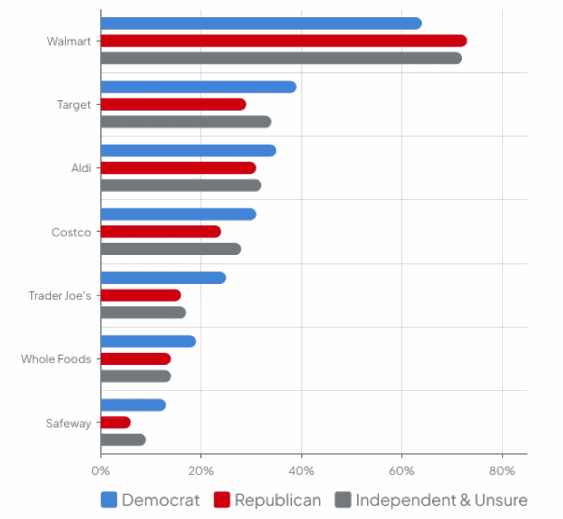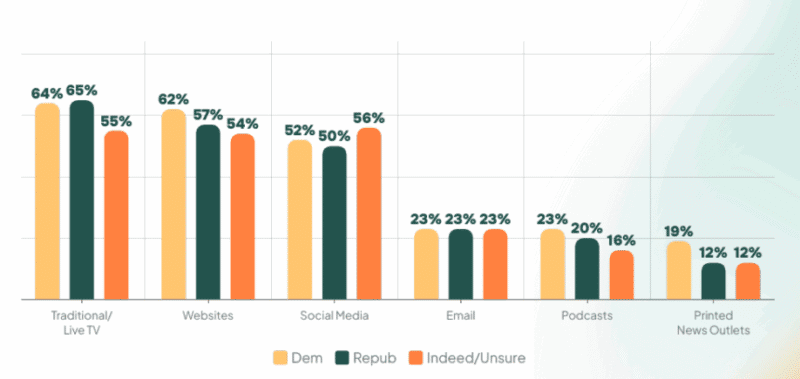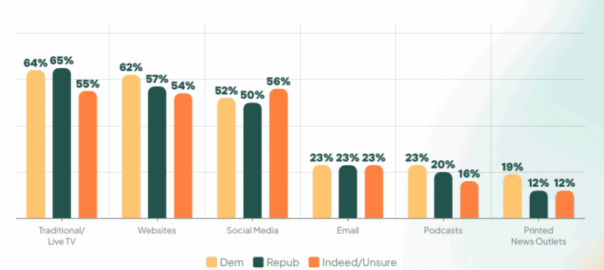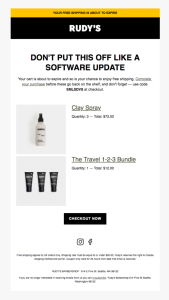As November elections approach, here’s where Democrats, Republicans and Independents are shopping and getting their news.
Marketers are engaging very different consumers depending on their political affiliation. How consumers vote informs several other behaviors, including where they shop and how they consume media. And the distinction isn’t only between Democrats and Republicans. A large cohort of independents makes the polarized landscape even more complicated.
One-third (33%) of voters indicated they are independent or unsure of their political affiliation, according to a new study from data technology company Stirista and research firm Ascend2. Nearly half (44%) of the 2,000 consumers surveyed said they hadn’t decided on a candidate, and 31% said they didn’t identify as conservative or liberal.
Political advertisers need to identify these groups to tailor their message and make sure they aren’t wasting spend. And the same principles apply to B2C advertisers. For instance, if you’re looking to drive sales at Starbucks, your ad dollars are better spent on left-leaning and independent consumers. Only about one-third of Republicans say they prefer Starbucks.
“By combining consumers’ digital media consumption data with social affinity and purchase behavior interests, key voter clusters emerge giving campaigns the ability to reach and engage with critical segments including the holy grail independent and swing voters,” said Blaine Britten, SVP of data strategy,at Stirista in a release.
Britten pointed out that a 32% increase in political ad spend is projected this year over previous election cycles.
Why we care. In this political cycle, the electorate is highly polarized. Brands looking to avoid alienating large groups of consumers might court independents with their messaging, or stay out of politics altogether. As November gets nearer, consumers might also turn away from politically charged channels like social media. So this will be a dynamic space to watch throughout the year.
Independents. Independents or swing voters have distinct media consumption habits. They’re less likely than Democrats and Republicans to get their news from TV and more likely to get it from social media.
They’re also less likely to shop at the places that partisan shoppers favor. Nearly 20% of Independents reported visiting none of the popular destinations (Walmart, Chick-fil-A, Starbucks, Trader Joe’s) included in the survey.
Half of Independents say their purchases and media consumption decisions align with their political views — whatever they are — and 58% say that they are inclined to purchase from organizations that actively support causes they support. This group is also the least likely to purchase from small, local businesses, the study found.

Gen Z. Nearly half (45%) of Gen Z identifies as liberal, and just 23% as conservative. Oddly enough, the study found that 50% of Gen Z depends on Fox News for most of their news consumption.
Compared to other generations, Gen Z is four times more likely to favor social media as their news source than Boomers, and two times more than Gen X.
Influencers. Only one in five respondents to the survey said voting decisions were determined by celebrities and influencers. However, 36% of Gen Zs and Millennials said they sway their votes.
Overall, celebrities and influencers have a greater influence on purchasing decisions than votes. Twenty-five percent of consumers said influencers had a “somewhat or significant impact” on their purchase habits. And 63% of consumers said they thought it was important to buy products from companies that actively support the same or similar causes.
Media habits. Here is what the study found regarding how different political affiliations get their news.

The post Political polarization reflected in voters’ shopping, media habits appeared first on MarTech.
(6)





